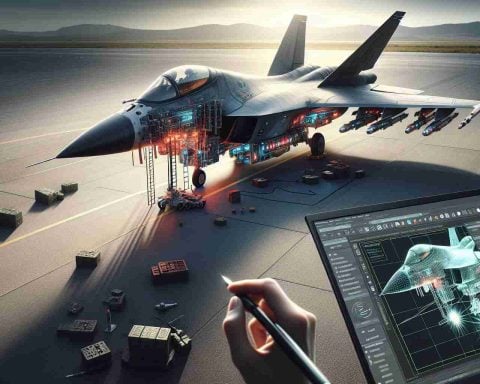The Grumman F11F Tiger, a visually striking aircraft often overlooked in military aviation histories, possesses a fascinating legacy as a key contributor to naval aviation advancements. First taking to the skies in the 1950s, the Tiger became notable not just for its sleek design but for its role in pushing the technological boundaries of the time.
The F11F Tiger was conceived as a supersonic carrier-based fighter for the United States Navy. It was the Navy’s first jet to achieve supersonic speeds in level flight, a crucial development during the Cold War era when the need for speed in military aircraft was paramount. While initially designated as the F9F-8, it was redesignated as the F11F to distinguish its advanced capabilities compared to its predecessors.
One distinct feature of the F11F Tiger was its narrow fuselage and sharply swept-back wings, which allowed it to cut through the air with reduced drag, achieving higher speeds. However, despite these advancements, the Tiger faced challenges in the form of limited operational range and payload capacity, which ultimately restricted its service lifespan.
Serving with the Navy’s prestigious Blue Angels flight demonstration team from 1957 until 1969, the F11F Tiger left an indelible mark as it thrilled millions with its aerobatic displays. Though its frontline service was relatively short, the aircraft’s legacy endures in its contribution to advancing carrier-based aviation and influencing the design of future supersonic jets.
The Forgotten Innovator: How the F11F Tiger Shaped Modern Aviation
The Grumman F11F Tiger, while often overshadowed in popular military aviation narratives, presents a legacy teeming with innovation and influence. As the first supersonic fighter jet designed for carrier operations, the Tiger’s advancements significantly impacted modern naval aviation, leading to profound implications for communities, countries, and the aviation industry.
How did the F11F Tiger influence future designs? The F11F Tiger’s design principles have been instrumental in guiding advancements in fighter jet technology. Its streamlined fuselage and aerodynamic profile have influenced the development of subsequent supersonic aircraft. The Tiger’s use of lightweight materials and powerful engines paved the way for newer, faster jets. This progression has allowed countries to enhance their aerial defense capabilities and achieve technological superiority in the skies.
What controversies surround the F11F Tiger’s deployment? Despite its cutting-edge design, the F11F Tiger faced criticism due to its limited operational range and payload capacity. These drawbacks sparked debates within military circles regarding resource allocation and strategic deployment decisions. Such controversies highlight the consistent challenge of balancing technological innovation with practical performance in combat situations.
What are the advantages and disadvantages recognized today? The Tiger’s main advantage was its revolutionary supersonic capability, which set a new standard for speed and agility in naval aviation. However, the short service span and logistical challenges underscored the importance of continuous innovation to address unforeseen operational limitations.
The F11F Tiger remains a testament to the pioneering spirit of military aviation, its impact shaping generations of aircraft design. For deeper insights into the legacy of military innovations, explore the Boeing website.
The article has been updated: 2024-11-08 14:40
Here are some suggested related links:
1. Aircraft.com – A comprehensive resource for information on various aircraft, including historical data and features of notable fighters like the Grumman F11F Tiger.
2. Military.com – A site dedicated to military news and history, offering in-depth articles about iconic military aircraft, including the innovations and technology behind the F11F Tiger.
3. Wings Magazine – A publication focusing on aviation stories, featuring articles about pioneering aircraft and their contributions to aviation history.
4. History.com – A reliable source for historical articles that provide context and details about significant military aircraft and their roles throughout history.
5. Air Force Magazine – A magazine that covers Air Force-related topics, including aircraft advancements and profiles of influential fighter planes like the Grumman F11F Tiger.
6. FlightGlobal.com – An aviation news site that provides the latest insights, expert analysis, and historical backgrounds on various aircraft, including legendary models like the F11F Tiger.
7. Aerospace Daily – A platform for aerospace industry news, with articles addressing technological innovations and military aircraft profiles.
8. Defense.gov – The official website of the U.S. Department of Defense, which includes information about military history, aircraft developments, and their significance in defense strategies.
The article has been updated: 2024-11-09 05:22
What key feature of the Grumman F11F Tiger set it apart from other fighter jets of its time?
The Grumman F11F Tiger was trailblazing primarily due to its innovative use of a variable-incidence wing. This feature allowed the wings to be adjusted in-flight to optimize lift and control, particularly during takeoff and landing. This design not only improved the aircraft’s performance at various speeds but also contributed to its exceptional maneuverability, making it a standout fighter jet in the 1960s. The combination of advanced aerodynamics and powerful engines enabled the F11F Tiger to excel in both air combat and as a naval fighter.



















